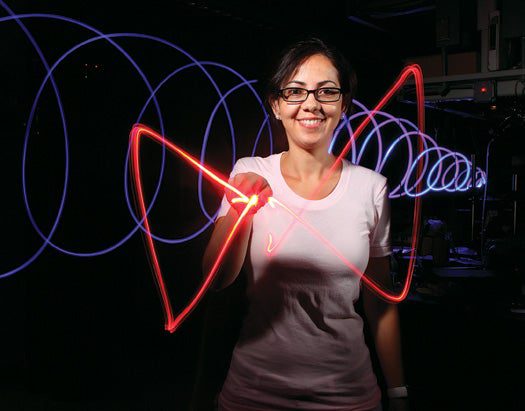One of the many challenges of practicing medicine in developing countries is performing quick, reliable diagnosis of infectious disease. To bring rapid virus diagnostics to underserved populations, engineer Hatice Altug and her research team at Boston University have created and tested a biosensor that detects disease-causing organisms with precisely directed light.
The central component of Altug’s biosensor is a metal sheet pierced by millions of 300-nanometer holes. Altug covers the sheet with antibodies and shines light of a particular wavelength on it. The electrons in the metal interact with the light and resonate, then re-radiate light of the same color on the other side of the sheet. Coated with the correct antibodies, the metal sheet will grab virus particles out of a blood serum sample as it flows through the tiny holes. And once stuck, the viruses will change the resonant frequency of the metal’s electrons enough that the re-radiated light visibly changes color. In July, the National Institutes of Health awarded Altug’s group a fiveyear, $5-million grant to make the biosensor clinic-ready.
Biology is new to Altug. She left her native Turkey in 2000 to study at Stanford, and it’s only since starting at Boston University in 2007 that she’s been applying her engineering expertise to biology problems. “She’s an integrator,” says Martin Moskovits, a materials researcher and a provost at the City College of New York. “She takes technologies that were developed in isolation and melds them together into these wonderful devices.

Read more about the molecular filmmaker, the butterfly pharmacist, and the rest of our Brilliant 10.









